
Nikon D5 Review
Preface:
Early in 2018, after over a decade of shooting birds with Canon equipment, I switched to the Nikon system, aka the dark side. Many have asked why it took me such a long time to publish the review of Nikon’s flagship D5 which is the first piece of Nikon equipment I received back in Jan ’18. I wanted to put the Nikon rig into its paces and deliver an objective review based on its field performance, rather than on the short lived excitement and the adrenaline that comes with a brand new piece of equipment.
Note: this review contains full HD images best viewed on a high resolution desktop screen, to view in HD click on each image.
Introduction
Announced back in January 2016 , the D5 is Nikon’s flagship DSLR and it was the first camera to feature Nikon’s new Multi-CAM 20K AF system. Prior to the D5, high-end Nikon DSLR’s were fitted with the decade-old Mulit-CAM 3500 AF module which was first introduced in 2007, with the Nikon D3. I owned a Nikon D3s for a brief period in 2011. Back then, my conclusion was that while the Nikon system was a bit more consistent than the then Canon EOS-1D Mark IV in terms of AF, it struggled to keep up with challenging BIF. The servo drive in the old Nikon lenses was just too slow for serious BIF. With the EOS-1D X and 1D X Mark II, Canon made a number of improvements in the AF department, further widening the gap with Nikon which was still stuck with the old system.
This all changed with the introduction of the D5 and Multi-Cam 20K AF system that can be found in the D500, D850 as well as the D5. Nikon’s new AF system is not simply an evolution of the same older AF systems, such as it was with EOS-1 D series cameras. The new system tripled the number of focus sensors (153 vs. 51) offering a very dense array of sensors. By 2017 there were a few credible reports by respected bird photographers claiming the Nikon AF system performing noticeably better than the Canon system when shooting BIF. Cross comparing results for such subject as BIF is very difficult since the skill and the experience of the photographer is the most important factor in the output.
When I first tried a Nikon D5 attached to a Nikon AF-S 600mm f/4 E FL in Bolsa Chica, in southern CA, I did not notice a significant difference. It seemed like a huge step up from the previous generations of Nikon cameras but not much better than Canon’s flagship EOS-1D X Mark II which I was using at the time. Please refer to my EOS-1D X MKII review here. During my shoot, I set up the camera the same way I had always set up my Canon cameras which produced the best results for that system. In early 2018, a fellow bird photographer convinced me to try the Nikon system again but with a different AF setting. This time I got to try the D850 which is a slower camera than the D5 but even when shooting at a modest 7fps (the loaner did not have the Nikon grip) I was impressed with the higher keeper ratio when photographing challenging subjects… Fast forward to present day and I am publishing my first review of a Nikon pro body for bird photography.
Build quality and handling
The build quality of the Nikon D5 is very high as expected, Nikon have spared no expense here making this body from a single piece of magnesium coated with a tough weather-proof rubber skin. The large grip and large buttons makes it easy to operate the D5 in cold temperatures and when wearing thick gloves. Overall, the build quality is the same level as the Canon 1D series, the best in the industry. The images below show the D5 side-by-side next the gripped Nikon D850 and the smaller D500. The D5 is actually smaller and lighter than the D850 with the optional grip attached (required to achieve 9 fps continuous shooting).

From left to right : Nikon D500, Nikon D5 and the Nikon D850 plus Nikon MB-D18 grip. With the grip attached, the D850 is the largest and the heaviest of the three.
All three cameras have a 3.2″ high resolution touch screen on the rear. The D850 and D500 both have articulating screens which is a nice feature but I wouldn’t want one in a D5 since it will be the weakest point and compromise its durability. I hand hold my rig at all times so I almost never use live view any way, except for when I am testing my cameras. From the three, the D850 has the most comprehensive “touch” feature: most of the shooting and review screens use the touch feature while in the D5 it is much more limited. Nikon could easily fix that in a firmware update. Having said that, Nikon D5 is a step up from the EOS-1D X MKII in this regard, which despite having the touch hardware, does not use touch function for anything besides live view focusing!
The menu system is almost identical between the three cameras. One nice feature of the three Nikon bodies shown above is back-lit buttons that make it easier to work in dim conditions. the D5 numeric LCD’s (top and rear) both have a blue back light as opposed to the green in D850 and D500.
The D5 can be ordered with either dual CF (which is completely obsolete in 2019) or dual XQD card interface. The XQD interface is based on the faster PCI-E interface with continuous write speed >400MB/sec. and allows for up to 512GB (2 x 256 GB XQD cards) of in-camera storage. Having to deal with only one type of memory card and reader simplifies traveling and the workflow. With the XQD card, the camera can shoot RAW at 12 fps indefinitely. I use Sony XQD cards.
My only gripe with D5’s ergonomic is the placement of the AF toggle switch (seen below in the lower right corner by the FX badge) and the mode selector. I always shoot in continuous AF (AF-C) but I some times need to change the AF pattern on the fly and while hand holding my big lens, the AF-S 600mm F/4 E FL. This impossible to do with Nikon cameras. To get around this, I have assigned the programmable buttons on the front of the camera to toggle the active AF pattern. The D5 has plenty of programmable buttons.
I have programmed the button closest to my index finger to toggle the AF pattern. This is very handy when you want to switch quickly between Grp/dynamic AF pattern to a single point for added precision

Each of the three user programmable buttons can be assigned to perform a unique task. In this case the first button is assigned the change the AF pattern.
.
Viewfinder
The view finder is one of the most critical parts of the camera body for me. I wear glasses and I find Nikon’s eye piece more comfortable than Canon’s. Because the eyepiece is elevated I can see the entire view finder area. The D5 has a very large bright finder, when working with other cameras and then switching to the D5 it is hard not to appreciate this finder. Nikon’s D500 finder in comparison feels a bit dark and cramped. It’s fun to just watch birds and wildlife through D5’s finder. Compared to he EOS-1D X Mark II, the finders are probably similar in size but because of Nikon’s better eyepiece design folks who wear glasses like myself will find the D5 finder larger.
Image quality
Do note that I am very critical when it comes to image quality. I use my 32″ 4K reference NEC monitor to edit and evaluate my images. I mostly display my images on the same monitor or on a 65″ 4K TV. If I print anything it must be large. I like my RAW files to be tack sharp when I view them at 100% on my high-resolution monitor.
Overall the image quality of the Nikon D5 is exactly what you would expect from a $6K+ flag ship body. The files are crisp and clean at 100%. Having said that the output quality of any camera is a strong function of the RAW conversion software and parameters used in the conversion. I have found that I get the best results form Phase One’s Capture One Pro (C1P) software. The colors are accurate right out of the box and the files look sharp without looking over-sharpened or grainy. The details of my process are explained in my C1P guide. This is in contrast with the Canon system where the Canon Digital Photo Professional (DPP) gave the best results by using Canon’s own propitiatory RAW demoniac and sharpening algorithms. Nikon also provide their own Capture NX-D software, but unfortunately it is quite disappointing to use. On my Intel Core i9 12-core PC loaded with RAM and the fastest PCI-E NVMe SSD, it takes tens of seconds to render thumbnails in a folder, open an image, make changes, view the changes and save it. Nothing is realtime and there are significant delays. The same machine slices through thousands of NEF files in C1P like a sharp knife slicing soft cheese. The Nikon Capture software is junk IMO-Don’t bother installing.
Compared to Canon’s EOS-1D x Mark II and Canon’s excellent DPP 4.8 software the output from the Nikon D5 and C1P is quite similar. At very high ISO’s (above 4000) Nikon is a bit better, on the other hand the D5 appears to have a stronger optical low-pass filter on its sensor compared to the Canon 1D series. As a result, a stronger RAW sharpening in C1P is required to give the same crisp look as the 1D when viewing RAW’s at 100%. The strong optical low pass filter is something I remember having seen on the older D3 and D4 series cameras as well, it attenuates the single pixel detail to some degree to prevent moire. I wish Nikon had deleted the low pass filter in D5 as they did in the D850, nevertheless after processing D5 files, the results looks great. There are many full HD sample images provided in this review.
Overall the image quality is not a deciding factor between Canon’s and Nikon’s flagship bodies and definitely not a reason to switch systems.
Below are some still life samples taken with the D5 and the 500PF on tripod with manual focus and remote release.
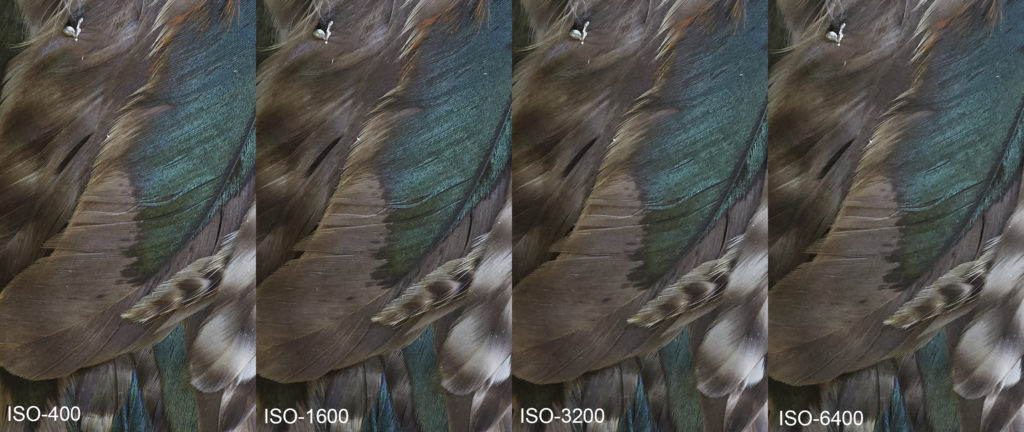
100% crop from RAW, Nikon D5 and 500 PF at f/5.6. RAW converted with optical settings in C1P. Click on the image to enlarge
As you can see above the D5 does a great job of maintaining fine details up to ISO-3200. At ISO-6400 there is a slight but visible loss of detail. Overall I feel comfortable using my D5 up to ISO 4-6K depending on the scene and the subject which makes the D5 the absolute king of high ISO/low light.
Field image quality of the D5 is excellent and leaves little to be desired as shown in the examples below.

An encounter with the rarely seen adolescent harrier. This morph is half way between a juvenile and adult, the transitional plumage makes it very unique. Shot with the AF-S 600 F/4E FL + TC14-E III, ISO 640 f/5.6 at 1/3200 sec hand held. Click on the image to enlarge.
100% crop from RAW
In low light, the soft and rust-color plumage of the juvenile female northern harrier were rendered beautifully with no visible grain or color shift typically seen in high ISO files.

Juvenile female norther harrier. Nikon D5 and AF-S 600 F/4 E FL + TC14-E III ISO 4000 f1/2500 sec at f/5.6 hand held processed with C1P. Below 100% crop from RAW.
One thing to note is that in order to produce a high image quality with outstanding details with the D5 (or any other 20-mega pixel FF camera) you need to get close to your subject. You don’t want to crop the files more than 50%. This might be challenging for small and skittish birds . A 50% crop of a Nikon D850 image on the other hand contains more pixels than the full frame D5 image, making the D850 (or D500) more suitable for photographing small/skittish birds from a distance.
Below you can see a comparison between the 20 mega-pixel D5 and the 47.5 mega-pixel D850. As you can see the D850 delivers a higher resolution image with more fine details thanks to its massive pixel count. At ISO’s above 1600 or in low light, however the noise starts to affect the detail in the D850 image degrading it much more than the D5. In most but special circumstances, I don’t find the files from my D850 to be great above ISO 1600. Of course I’d prefer the resolution of the D850 but with the low light performance and the speed of the D5, but that’s not possible.
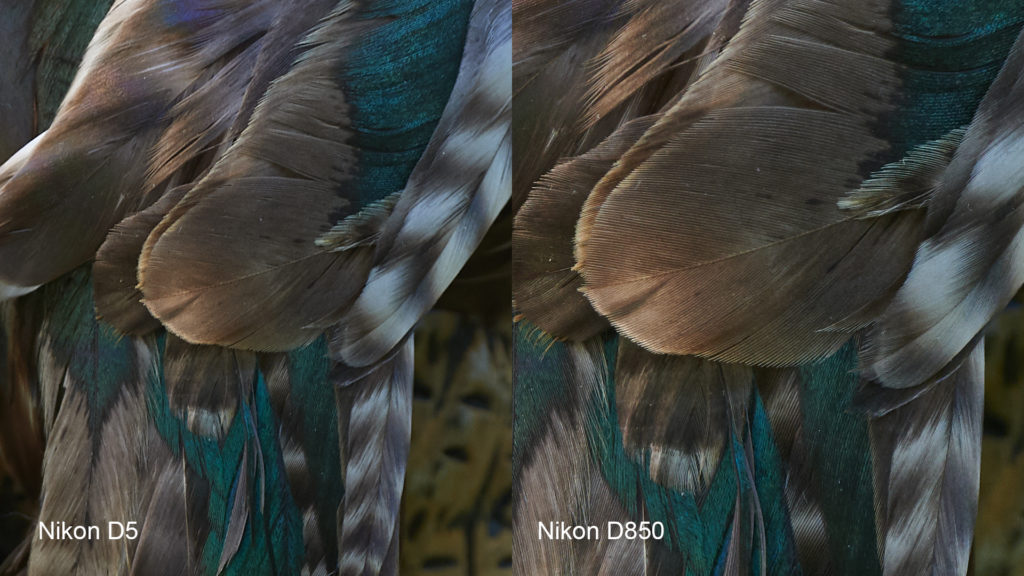
Left: Nikon D5, right: Nikon D850. Shot with AF-S 500 f/5.6 PF 1/200 sec ISO 1600 on tripod. processed with C1P. Click on the image to enlarge.
Note all images below are processed with Capture One Pro.
Auto Focus for BIF
So far we have learned that the D5 checks the boxes next to excellent build quality, handling and image quality but so does Canon’s EOS-1D X Mark II. What really differentiates these two bodies is the AF performance.
Fundamental differences in AF systems
On paper the EOS-1D X Mark II’s AF array includes 61 AF sensors. 41 sensors are cross-type when using a f/4 super-telephoto lenses. This number reduces to 21 when attaching a 1.4X TC or a 2X TC to the f/4 super-telephoto lens. The Nikon Multi-CAM 20K features a much denser array of 153 AF sensors, roughly 2.5X more than the EOS-1D X Mark II. 55 sensors can be selected by the user, 63 sensors are cross type when using f/4 FL series super-telephoto lenses, this number reduces to 45 when attaching the 1.4X TC to the f/4 super-telephoto lens. So on paper Nikon’s AF grid is much denser than Canon’s flagship AF system. The denser array increases the chances of one or more sensors falling on a contrasty spot on the subject when tracking BIF hand held with a big lens. Note that the AF sampling area is not exactly as large as what is shown in the diagram below.

AF pattern for (left) Nikon D5 and (right) EOS-1D X MKII. The Nikon system has many more sensors than the Canon system. Source: Nikon and Canon publications.
The other major difference between the Canon and Nikon AF is that Nikon gives priority to focusing on the closest subject when tracking, as opposed to trying to be smart and “predict” the subject’s flight path, something that cannot be done for such erratic subject as BIF. A desirable BIF image is usually made with the bird flying against a colorful varied background, far from the background but close to the photographer. This falls into Nikon’s closest subject priority scenario. As a result the Nikon AF system is more stable than Canon’s when tracking BIF against color. To put it simply, it doesn’t constantly try ot refocus.
Servo drive speed
The AF drive speed is equally important and was the Achilles heel for the older Nikon bodies. In practice the, D5’s AF is rapid when using with f/4 FL series super-telephoto lenses such as the 600mm f/4 E FL or such lens attached to the TC14E-III. Again it’s difficult to measure a difference between the D5 and the EOS-1D X Mark II here, both can drive the attached super-telephoto lenses strongly and almost instantly. Even when shooting with a lens + TC combination with a maximum aperture of f/8 , the focus drive speed feels equal between the two. Example: The EF 400mm f/4 DO IS II + 2X TC III attached to the Canon 1D X MKII and the 500mm f/5.6 PF + TC14E-III attached to the D5, So again nothing to choose between the two in terms of AF servo drive speed.
The difference
What is different between the two cameras, is how each camera can hold focus and track the BIF as the photographer pans with the subject. The Canon AF often does not “see” the subject until it is at least as large as the center metering circle in the finder. Once locked, the camera can lose focus instantly if the subject drifts away from the center of the frame and sometimes even if it is dead centered in the finder.
The Canon AF is a bit “nervous” constantly looking to focus on something new. In order to get the results one expects from 20 grand worth of Canon equipment, the combination of the correct AF settings, specific AF techniques (such as bumping and late acquisition) and perfecting hand holding skills with long lenses are ALL required, as explained in detail in my BIF guide. Without these techniques, one can literally end up empty handed after an active shooting session, if tack sharp files of a challenging subject are desired. There are some situations where the Canon AF simply cannot lock and then keep up with the subject. The Nikon on the other hand can pick up the subject much earlier and when it is smaller in the frame. It will stay locked on the subject as it flies across a varied background coming closer towards the photographer.
Since one can shoot with only one camera at a time only, I relied on my past and present experience shooting similar subjects in order to compare the two systems. I have been shooting in the same location, at the same time of the year, with the same light, from the same spot so the field parameters were as close as possible. I knew which kinds of shots the Canon would likely nail and which ones it would likely miss. So I aimed the combination of the Nikon D5, 600 f/4 E FL and the 500 f/5.6 PF at the same subject.
I shot a variety of other subjects with the D5 including harriers, kites, hawks, falcons and shorebirds, in all of these cases the AF delivered the great confidence and reliability. In fact in many of these cases even the D850 AF performed better than what the EOS-1D X Mark II would have delivered, again from many years of experience shooting these subjects at these locations.
The D5 AF had great success locking on these fast shore birds in poor light conditions. The semipalmated plover in particular is a tough subject to get in flight.

Semipalmated plover in flight in low light. Shot with AF-S 600mm f/4 E FL + TC14-E III. ISO 3200 f/5.6 at 1/3200 sec hand held processed with C1P. Click on the image to enlarge.

Black skimmer. Shot with AF-S 600mm f/4 E FL + TC14-E III. ISO 2500 f/5.6 at 1/3200 sec hand held processed with C1P. Click on the image to enlarge.

Red knot in flight (low light). Shot with AF-S 600mm f/4 E FL + TC14-E III. ISO 3200 f/5.6 at 1/3200 sec hand held processed with C1P. Click on the image to enlarge.
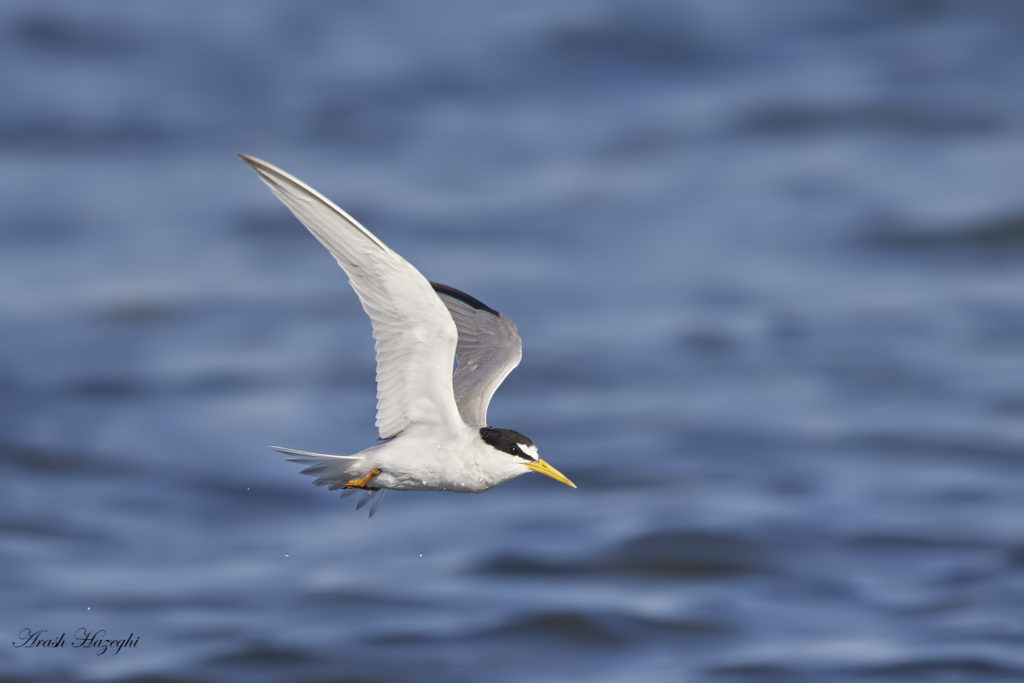
Least tern, Nikon D5 and 600 f/4E FL + TC14-E III ISO 640 f/5.6 at 1/4000 sec hand held processed with C1P.

Forster’s tern with small fish. Shot with AF-S 600mm f/4 E FL + TC14-E III. ISO 640 f/5.6 at 1/3200 sec hand held processed with C1P. Click on the image to enlarge.
AF at f/8
The D5 can maintain most of its focus performance with lens+TC combination with a maximum aperture of f/8 such as the popular AF-S 500 f/5.6 PF VR and the TC14E-III. This combination is fast enough on the D5 to be used even in low light as seen by the first example below.

Forster’s tern (low light), Nikon D5 and 500mm F/5.6 PF + TC-14E IIf/5.6 ISO 4000 hand held proceed with C1P
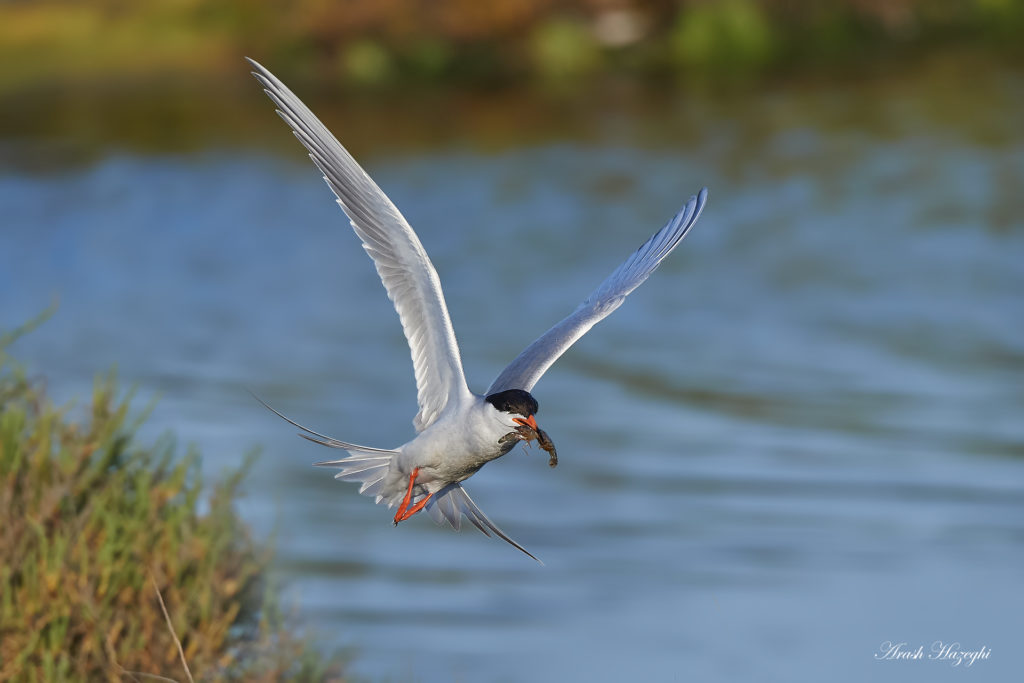
Forster’s tern with shrimp. Shot with AF-S 500mm f/5.6 PF + TC14-E III. ISO 1250 f/8 at 1/3200 sec hand held processed with C1P. Click on the image to enlarge.

Dove, Shot with AF-S 500mm F/5.6 PF + TC14-E III. ISO 1000 f/8 at 1/3200 sec hand held processed with C1P. Click on the image to enlarge.
This image was taken when it was literally dark. I had to raise the exposure in post but the colors held up well. There is no color distortion as a result of high ISO.

Adult cooper’s hawk SHot with AF-S 600mm F/4E FL. ISO 3200 F/4 at 1/3200 sec . Hand held. Processed with C1P. Image taken at sun set in low light.
I spent two days shooting peregrine falcons in low light (lowest ISO I used was 1600 with most shots at ISO 2500 or ISO 3200). I had no doubt in my mind that the Nikon could nail most of the shots that the Canon would simply miss. Do note that no camera in the world, not even the D5 can deliver 100% hit rate when it comes to shooting a challenging subject as a peregrine falcon in low light, but the keeper ratio was higher with the Nikon. Unfortunately the activity was much lower than the time when I shot in the same location with EOS-1D X MK II in 2016, in fact it was the lowest I had seen, but the camera made the most out of the few opportunities it had.

Adult falcon. Shot with AF-S 500mm F/5.6 PF. ISO 3200 f/5.6 at 1/1250 sec hand held processed with C1P. Click on the image to enlarge.

Adult falcon. Shot with AF-S 500mm F/5.6 PF. ISO 2000 f/5.6 at 1/3200 sec hand held processed with C1P. Click on the image to enlarge.

Adult falcon. Shot with AF-S 600mm F/4 E FL + TC14-E III PF. ISO 3200 f/5.6 at 1/3200 sec hand held processed with C1P. Click on the image to enlarge.
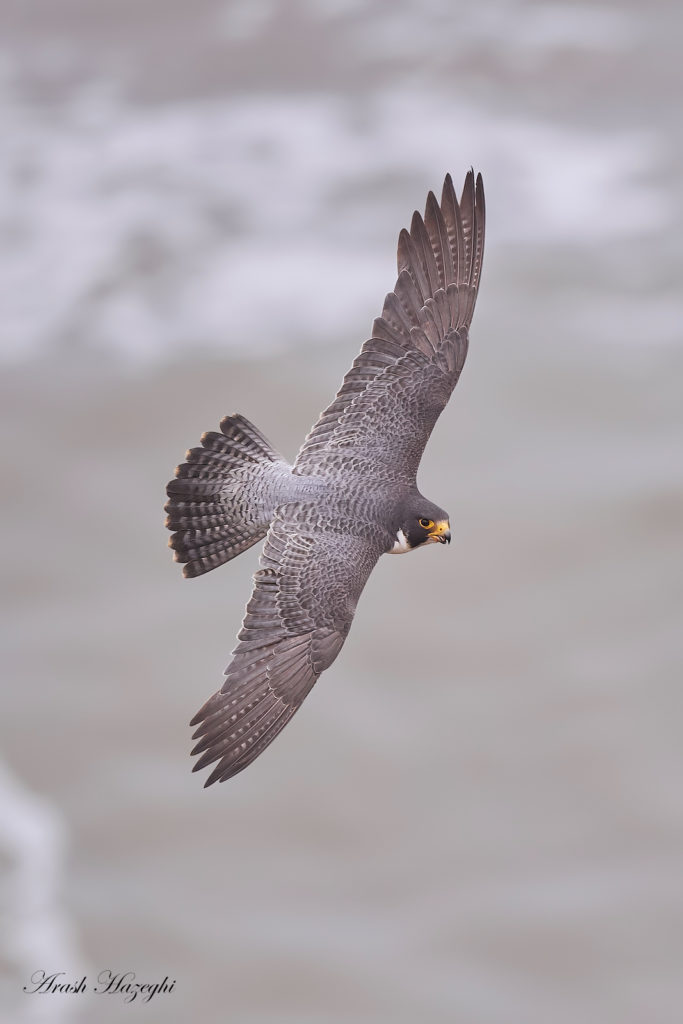
Adult falcon. Shot with AF-S 500mm F/5.6 PF. ISO 3200 f/5.6 at 1/2000 sec hand held processed with C1P. Click on the image to enlarge.
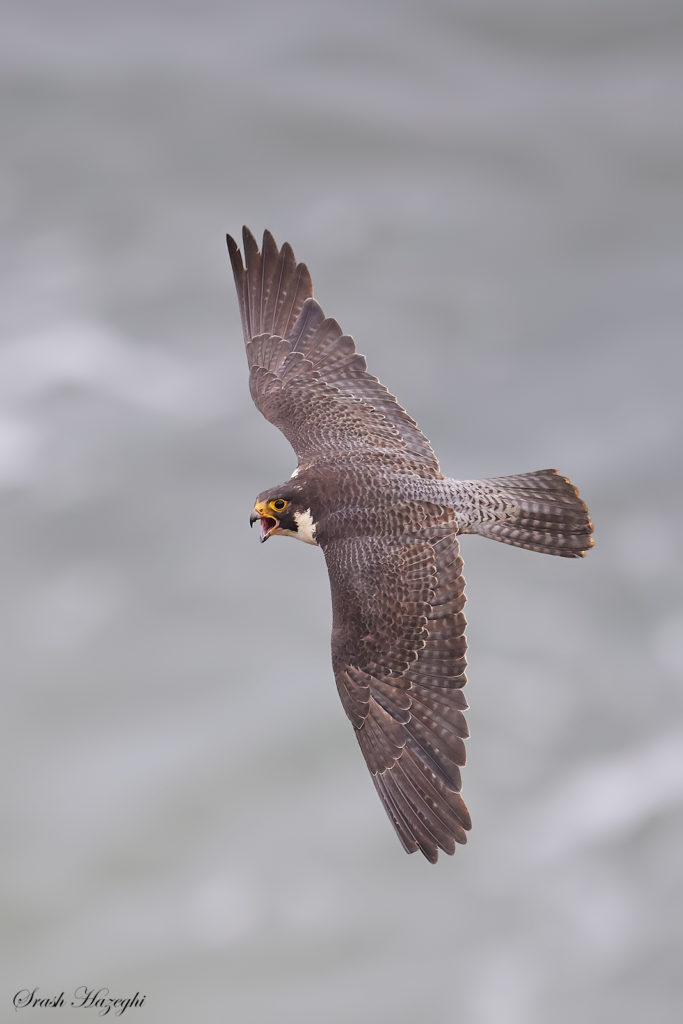
Adult female falcon. Shot with AF-S 500mm F/5.6 PF. ISO 3200 f/5.6 at 1/4000 sec hand held processed with C1P. Click on the image to enlarge.

Adult falcon after consuming the prey. Shot with AF-S 500mm F/5.6 PF. ISO 3200 f/5.6 at 1/2000 sec hand held processed with C1P. Click on the image to enlarge.
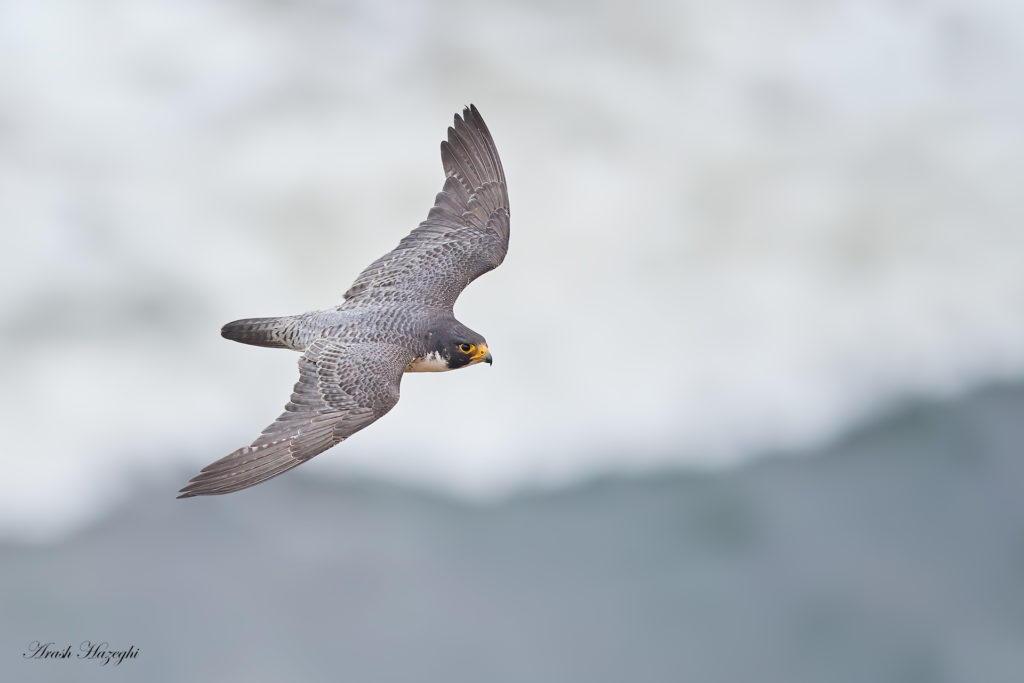
Adult falcon after consuming the prey. Shot with AF-S 600mm F/4 E FL. ISO 3200 f/4 at 1/3200 sec hand held processed with C1P. Click on the image to enlarge.

Adult female falcon after consuming the prey. Shot with AF-S 600mm F4 E FL. ISO 3200 f/5.6 at 1/2000 sec hand held processed with C1P. Click on the image to enlarge.
Another subject I photographed extensively with the D5 was the northern harrier . The harrier are more skittish and more difficult to approach but once you are close enough the results are spectacular. The image shown below is a good example of the tracking capability of the D5 against a very busy background and foreground, both full of distractions for the AF to lock on.

Young female northern harrier morphing from juvenile into adult plumage. Shot with AF-S 600mm F/4 E FL + TC-14E-III. ISO 640 f/5.6 at 1/3200 sec. Hand held. Processed with C1P. Click on the image to enlarge.
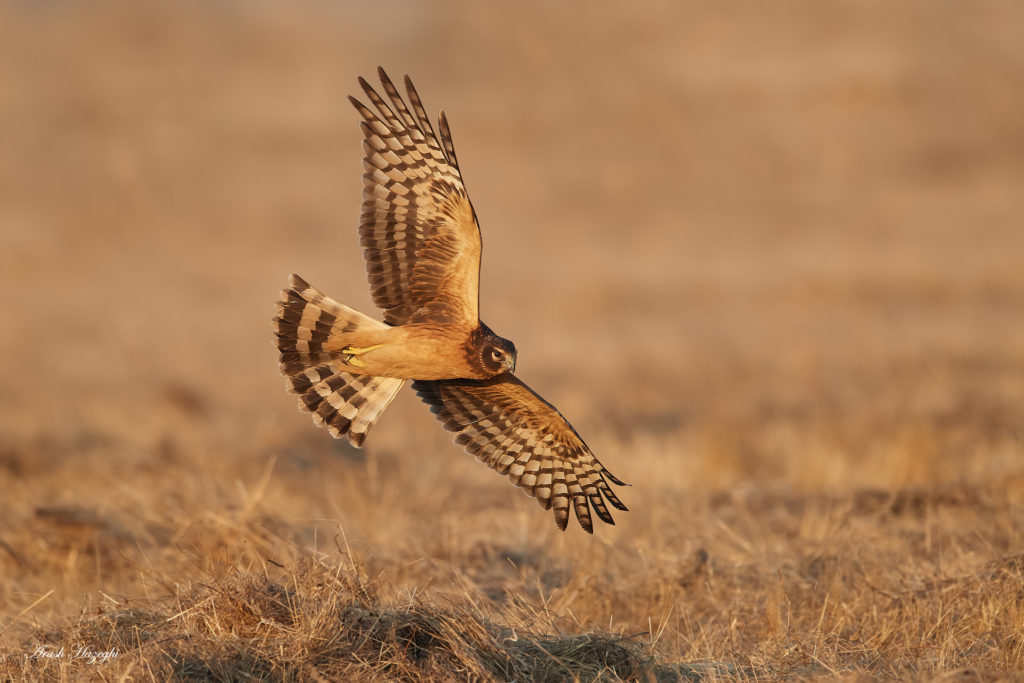
Northern harrier (juvenile female ). Shot with AF-S 600mm F/4 E FL + TC14-E III. ISO 1250 f/5.6 at 1/3200sec. Hand held. Processed with C1P. Click on the image to enlarge.
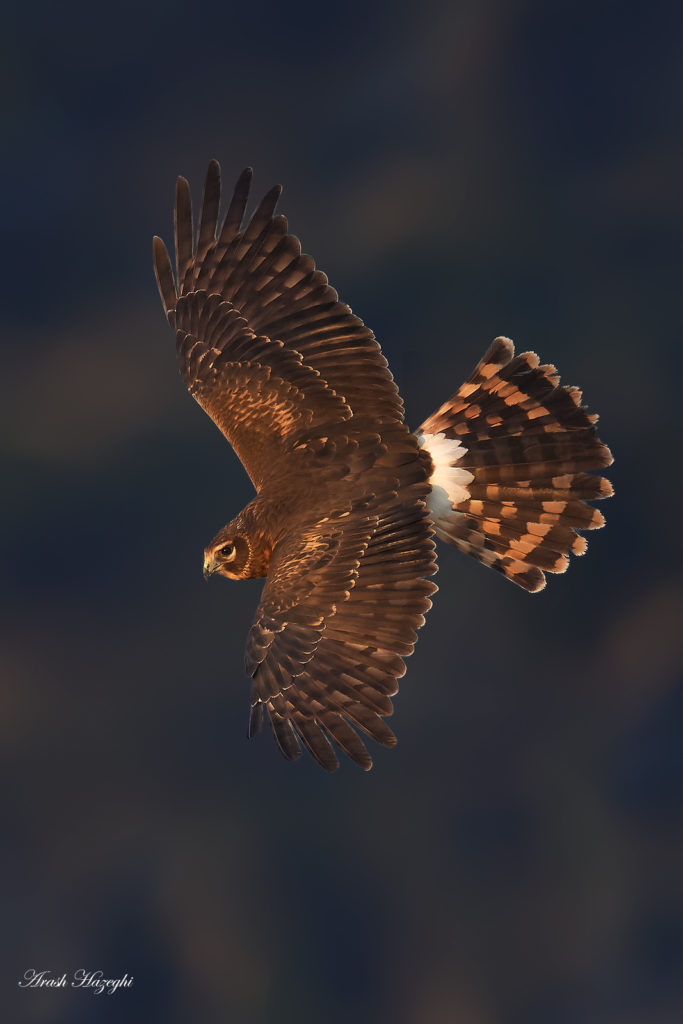
Northern harrier (juvenile female). Shot with AF-S 600mm F/4 E FL + TC14-E III. ISO 1250 f/5.6 at 1/3200sec. Hand held. Processed with C1P. Click on the image to enlarge.

Northern harrier (adult male). Shot with AF-S 600mm F/4 E FL + TC14-E III. ISO 3200 f/5.6 at 1/2500sec. Hand held. Processed with C1P. Click on the image to enlarge.
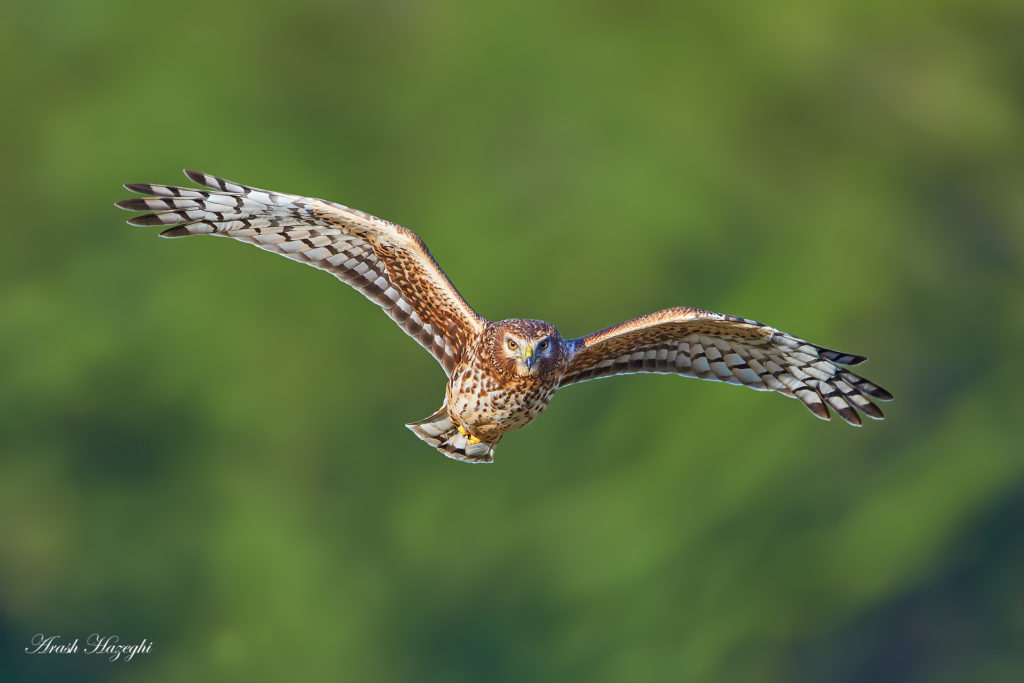
Northern harrier (fadult female). Shot with AF-S 600mm F/4 E FL + TC14-E III. ISO 800 f/5.6 at 1/3200sec. Hand held. Processed with C1P. Click on the image to enlarge.
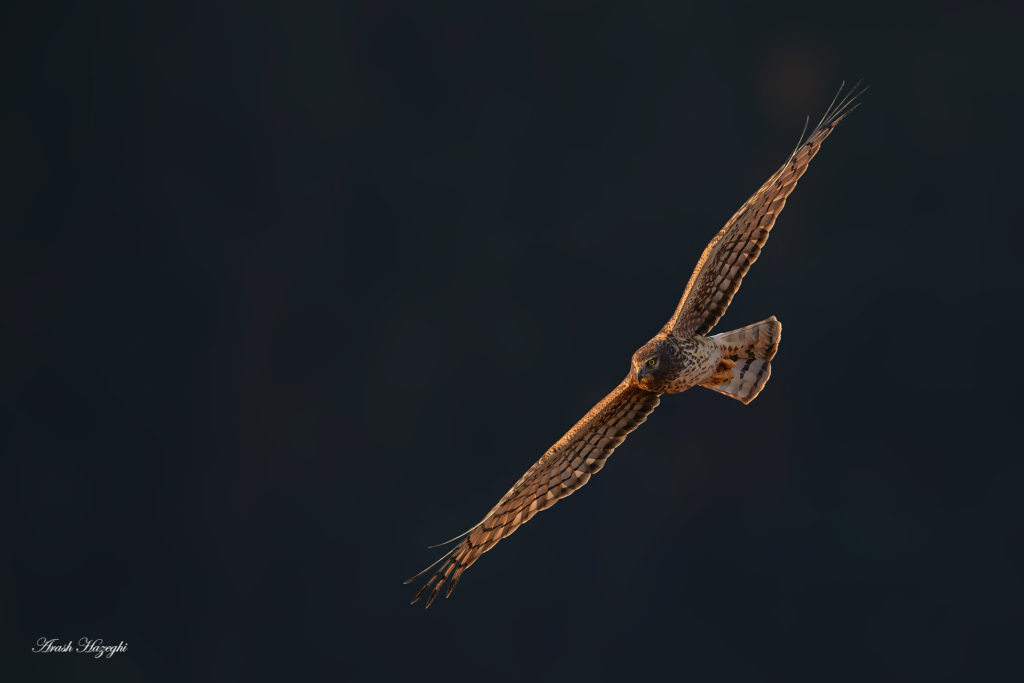
Northern harrier (adult female). Shot with AF-S 600mm F/4 E FL + TC14-E III. ISO 800 f/5.6 at 1/3200sec. Hand held. Processed with C1P. Click on the image to enlarge.

Northern harrier (young female). Shot with AF-S 600mm F/4 E FL + TC14-E III. ISO 800 f/5.6 at 1/3200sec. Hand held. Processed with C1P. Click on the image to enlarge.

Northern harrier (young female). Shot with AF-S 600mm F/4 E FL + TC14-E III. ISO 800 f/5.6 at 1/3200sec. Hand held. Processed with C1P. Click on the image to enlarge.
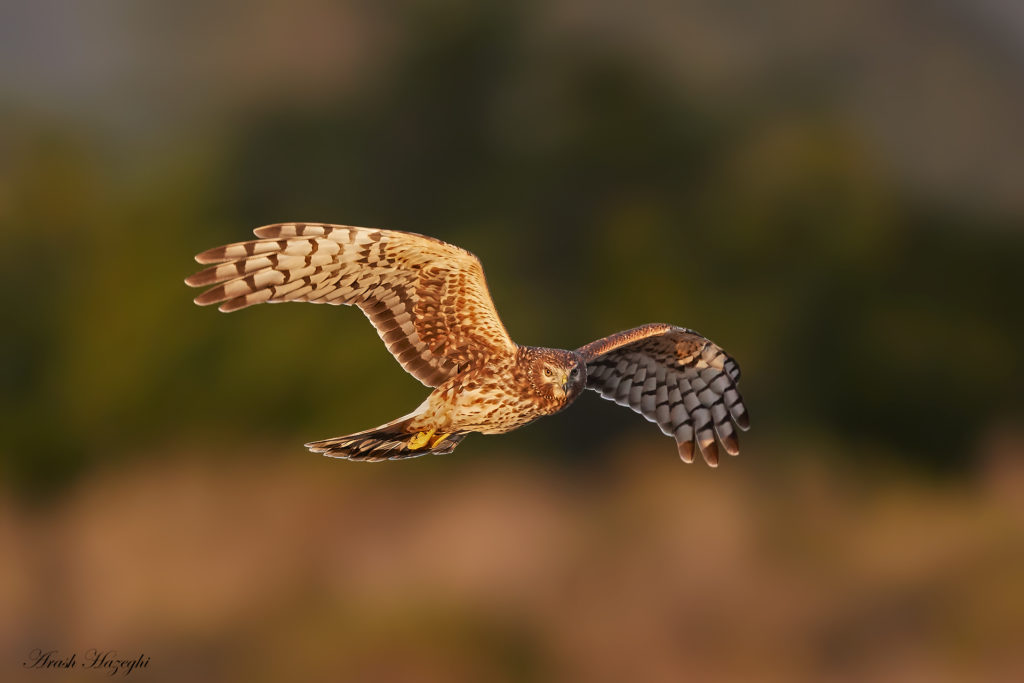
Northern harrier (adult female). Shot with AF-S 600mm F/4 E FL + TC14-E III. ISO 2500 f/5.6 at 1/3200sec. Hand held. Processed with C1P. Click on the image to enlarge.
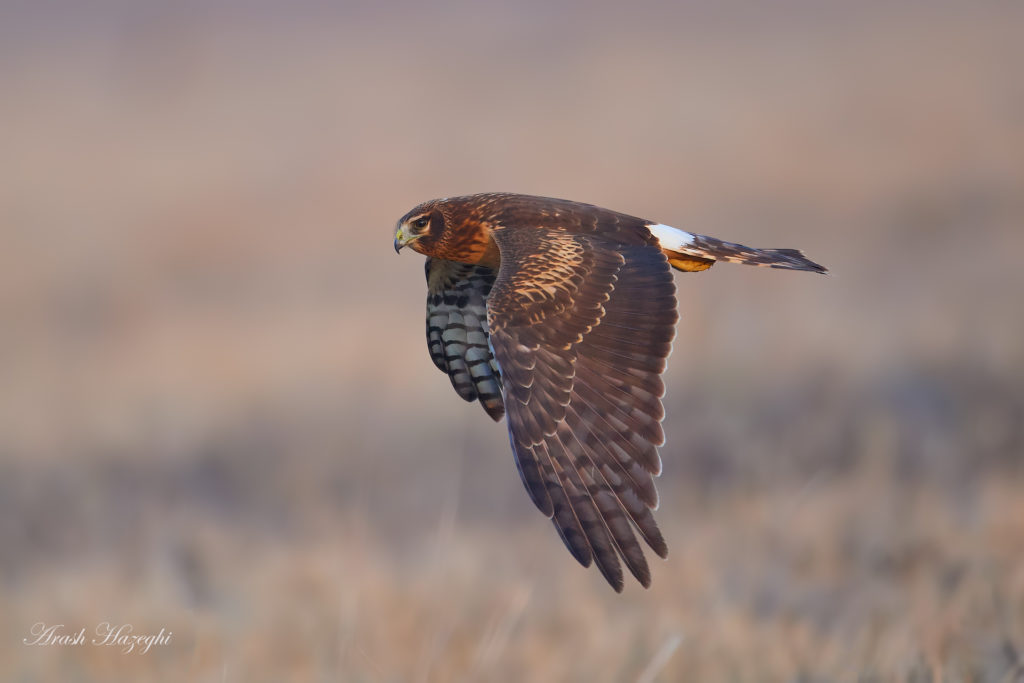
Juvenile female northern harrier (notice the dark eyes and the soft plumage). Nikon D5 and AF-S 600 F/4E FL + TC14E-III. ISO 4000 f/5.6 at 1/2500 sec hand held. Processed with C1P. Click on the image to enlarge.

Young female northern harrier, Shot with AF-S 600 F/4E FL + TC14E-III. ISO 800 f/5.6 at 1/3200 sec hand held. Processed with C1P. Click on the image to enlarge.
The small raptors such as the white-tailed kites are the most challenging for a 20-mega pixel FF image. Getting close is really important here, but if you are able to get close again the results will be more than satisfactory, especially if you are after interaction frames .
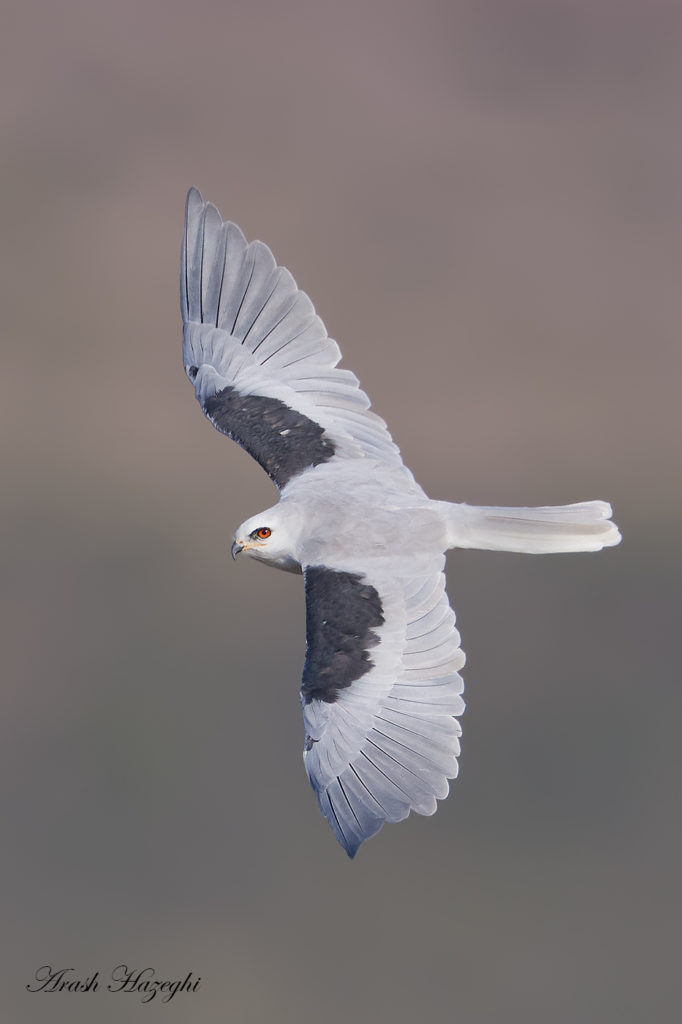
White-tailed kite (adult). Nikon D5 and 600 f/4E FL + TC14E-III. ISO 640 f/5.6 at 1/3200 sec hand held processed with C1P. Click to enlarge.

White-tailed kite (adult) with prey. Nikon D5 and 600 f/4E FL + TC14E-III. ISO 800 f/5.6 at 1/3200 sec hand held processed with C1P. Click to enlarge.
D5 versus…
How does D5’s AF compare against the D850 and the D500? This is the question I hear often. The D5’s AF is simply superior to that of the D850 and the D500. The servo drive is faster and the camera has less hesitation to initially grab focus on BIF. It is also less likely to lose focus once it has acquired it. Shooting white-tailed kites and harriers side-by-side with the D500, there is no question the D5 AF can stay locked for longer periods of time. I found that on a few occasions, the D500 lost focus on the subject and I had to re-acquire. This happened when the raptor’s profile suddenly changed (e.g. from banking to gliding with flat wings). On these occasions the D500 tends to lose focus while the D5 stays solidly locked. I noted a similar difference between the D850 and the D5. I am not sure if this is due to D5’s higher processing power or better calibration of its AF sensor and sub-mirror assembly. The D5 is also a faster camera than both D850 and D500, it just keeps shooting with no delay. The D850 on the other hand, tends to run out of buffer in intense action situations, which will slow down the AF too. The D500 frame rate can also drop in low light or when tracking complex subjects. Keep in mind in order to experience and take advantage of D5’s superior AF and take it to the next level, one needs to be on top of their BIF skills. Only a highly skilled competent driver can drive a hardcore race car at the limit. When shooting trivial subjects (e.g. seagull or pelican gilding against the ocean) all three cameras will perform similarly.
When maximum aperture is F/8 the difference between the D5 and the D850/D500 becomes night and day. The latter bodies become useless for BIF against varied BG’s while the D5 is still quite capable. This situation is somewhat less of an issue for the Nikon system as opposed to Canon since both D850 and the D500 can be used in place of the 2X TC in Canon’s system.
So there you have it. The D5 is better.
Having said that the difference between D5 and the D850/D500 is nowhere as striking as the difference between the EOS-1D X MKII and the lower cameras in Canon’s world. For challenging BIF, pretty much anything below an EOS-1D X (MKII) was inadequate . Both D850 and D500 on the other hand, are strong performers when it comes to BIF. They are both capable of capturing tack sharp flight shots with great consistency.
Summary and conclusion
The Nikon D5 is not for everyone, it is the camera aimed at working pros and those who would like to shoot high intensity action and capture many high quality images of challenging, dynamic subjects. It does that task perfectly and leaves little to be desired. At $5300 with the recent price drop, the Nikon D5 is still an expensive DSLR, but for the photographers who can afford the price, nothing else can quite deliver the same results. Nikon recently announced the development of D5’s successor, the D6. It would be interesting to see what new features/improvements the new camera will bring to the market.
Pros:
+ simply the best in class AF for birds in flight I have ever used. Rapid AF with consistent, reliable tracking against complex backgrounds.
+ rapid operation, 12 fps with practically unlimited buffer (XQD)
+large bright finder, friendly to those with glasses.
+ dual XQD card slots, does not mix two types of storage media.
+Clean files at high ISO, excellent dynamic range.
+excellent ergonomics, touch screen, back-lit buttons.
+ Large capacity battery.
Cons:
-Contrast detect AF in live view mode is obsolete and useless.
-The micro-detail in RAW files could be better, especially given that the camera is “only” 20 mega pixels.
-Nikon’s provided RAW conversion software is very poor to put it mildly.
-no integrated WiFi
-expensive



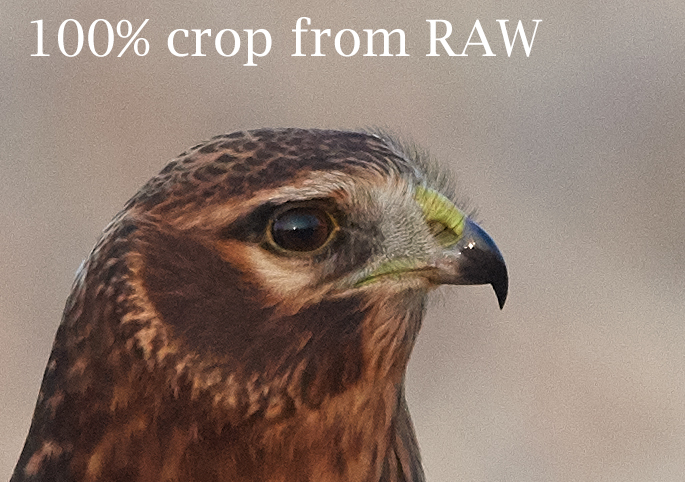
well thought out, well written, and beautifully illustrated, as expected.
what i found most interesting was the history of AF in both Nikon and Canon, the viewfinder being larger/higher and working better with glasses (an issue I have), and the whole discussion of how the AF works in all of the cameras discussed. I note in particular that if Nikon is better than Canon as a result of there being 153 AF sensors to spot the subject, vs 61 in Canon, then it seems that Sony’s 567 (covering almost the whole image, so the density is similar) might be even better. of course, Sony has its own issues, which might be an interesting review for another time.
i also found it useful that someone articulated that the D5 (or the 1DXii for that matter) is not well suited for cropping more than 50%, something I do routinely. If I’m doing that, I’m better off sticking with more pixels (exactly as I have been saying to my friends). I’m 65, I’ve been working out for about 4 years now, and I think i can say with some certainty, my arms are not getting any stronger. so if I can’t track a semipalmated plover now with 840mm (have you no modesty young man!!), chances are pretty solid, I won’t in the future (LOL). I can track them if they’re far away, but then cropping is de rigueur.
“At ISO’s above 1600 or in low light, however the noise starts to affect the detail in the D850 image degrading it much more than the D5”. I too have been saying something like this in comparisons of Sony’s A7R iv and Canon’s 5D iv. Its the same physics. Oddly, nobody seems to agree that smaller pixels might have better detail in bright light, but when the light is dimmer or the bird is moving faster, and ISO goes up, so does noise, and details get lost. Since you are the Stanford PhD in Electrical Engineering, specifically focused on sensors and such, and as such you truly are the expert in the crowd, I’m sticking with your description. To those who would say otherwise (and I won’t mention any names here), I say, it ain’t me.
thanks for the article Ari, and beautiful work! oddly, it helps inform my decision whether, or not, to [at least partially] switch from Canon to Sony, a decision I’m presently considering.
I shoot a 1DX2 and can’t dispute Ari’s opinion. A well written review.
Well, I don´t think I will ever switch brands as I do birds on a perch mostly but do love to try BIF with my Canon gear. I really enjoyed reading the whole review from some one I respect and it´s good to see what one can achieve with other brand. Again, it´s not the gear but boy does it help!
Can you hope for the new Canon (1DX MKiii)?
[…] Date:November 5, 2019 Author:Ari Category:Reviews Tags: D850 BIF, D850 birds, D850 for bird photography, D850 review, d850 review BIF, is D850 good for birds, nikon BIF, nikon bird photography, Nikon D850 review ← Nikon D5 Review […]
Canon may shine among the pros shooting sports events but until the new 1DX Mark III is actually in the hands of some serious bird photographers, concentrating on BIF, Nikon is where the emphasis currently is. That said this article addresses Canon’s ability to track and hold focus in a way which makes it clear that Canon does not exactly have an inferior system; Instead, in these regards, it has a system that is not optimally suited for BIF but remains, or may even excel, at sporting event action. After all, the amount of interest, time and effort taking pictures of birds, and especially those in flight, has only recently become exponential. In fact it is photographers such as Ari, using the outstanding recent technology evolution, who brought spectacular possibilities within the range of many who never thought they could perform likewise. Canon knows, that in BIF photography, the photographer has to follow the action to acquire the shot. Similarly Canon also knows that its technology has to acquire the attention of the purchaser so as to get the sale. Today, as opposed, to not so far in the past, there are crowds of people taking pictures of birds. In a free market economic system corporations, and especially Canon, can be counted upon to follow the money. Let’s see what the 1DX Mark III’s sensor and 535 selectable focusing areas does. It will not be an 850 in terms of megapixels, but then neither will the Nikon D6, but it may be a 5D Mark IV with every current criticism removed. It might make the fact that I kept my Canon 500 F4 and the Canon F4 DO, while I’m currently shooting Nikon, pay off.
I was speaking to Arthur Morris the other day. It was not so much about cameras and lenses as about companies and the forecasting of what they intend to emphasis for photographers. Morris was of the opinion that Canon was very big and their photo equipment makes up but a small part of their sales hence it did not warrant the commitment companies such as Sony are now making. Now that may be true regarding Nikon, which is smaller, and clearly depends on photo sales but photographic gear is also but a small part of what Sony does and it does not appear to dampen their very aggressive marketing strategy. The fact is that companies don’t ignore smaller departments unless they loose money. People are worried that Apple has primarily become an iPhone company and are not doing what they can for photographers. That may also be true but what about the deficiencies not addressed by Microsoft, which is essentially about operating systems and computers. The beauty of Microsoft is that they don’t stifle outside hardware development and, therefore, allow expandability by third parties but in so doing what you often end up with becomes unpredictable and temperamental. For most of us who are hobbyists the exceptional power is often unnecessary. For those who are commercial the power is often well understood anyway because that is what they do all day long and they are well staffed to deal with the innovative hardware they often employ. But even they have trouble dealing with accurate colors that Apple seems to have mastered better than any competition. Anyway, to get to the point, a lot of people are switching to Sony despite the horrible ergonomics. And that includes Arthur Morris based upon the common denominator nemesis of the competition. BIF photographers cannot look at systems which cannot quickly acquire and hold focus. Sony seems to have achieved an advantage (maybe) but I’m uncertain that it does a better job than Nikon and even if it has is relearning how to use such different hardware worth the effort to achieve some gain? If the cost associated with additional purchases are disregarded is there any reason to put aside the criticism I already mentioned pertaining to ergonomics? Your thoughts are appreciated, since, at one time, you thought that Sony was not even worth mentioning. In fact you were quite distinctly negative about Sony not so long ago. Has anything changed?
Hi Anthony I am not sure what you are asking?
BTW, you seem to be misinformed on many fronts. Microsoft is a 1 trillion dollar company and the bulk of its revenue is not from Windows or the stuff you have heard about it is from cloud services (Azure) and stuff you don’t know about.
Apple displays are mediocre at best, not sure what you are talking about. Microsoft does not compete with Apple. Apple is a phone company. Their revenue is from phones, watches and music services.
Canon is focused on professional photographers and they have more market share than the 2nd and 3rd combined. Bulk of Canon’s revenue is from photo, video and printing equipment.
best
I’m not impressed with Apple displays. Personally I use an NEC 32 inch 4K display. Apple is a phone company but their pro laptops are great field units and can sub as a non-gaming desktop. If a phone company also makes a good laptop I might buy it. In fact I did. The one I personally use is 15 inches using the best processor that was available when it was made; it has 32 gigs of memory and a 4 terabyte SS drive. I rarely keep Macs for more than a year. The one I’m now using was purchased less than 3 months ago and it will probably be replaced by the new 16 inch unit. I’m not a fan of Windows 10 laptops. And I’m not fond of multiple computers if a laptop can be made to do heavy stuff. My laptop comes to rest on a huge desk associated with three scanners, the NEC monitor, two printers and three external drives which are swapped out with two other three drive sets. They are all connected by a Thunderbolt 3 dock. The convenience is a pleasure. I like the Microsoft Surface Pro for specific unique purposes. Even a Mac and Parallels does not get some things right and therefore necessitates a PC. Specifically it is great for endoscopy cameras which use a USB 3 connection and that combo also provides LED illumination and eliminates the need for a separate light source; but it is not a good photo tool in my hands. It would be nice considering its size.
I never questioned Morris concerning his opinion regarding Canon’s revenue. That is what I was told. But I did wonder about Microsoft and made my own assumptions. Thanks for the clarity. I’m not surprised that they are all over the map. But what I am curious about is where Sony fits in for BIF. As I’m writing this i received a text message from another bird photographer who just took some great shots of cranes in flight using Canon’s M6. They were spot on but the background was the clear sky so there is a lot more that we don’t know about, for BIF, where it may falter. The lens he used was the 500 f4 with an adaptor. Things are changing fast. I like Nikon but I also plan to purchase the new Canon 1DX III. The current Canon 1DX II, which I own, was never taken out of the box. It is up for sale on the Morris site and is brand new. Lots of photographers are ditching their Canons and some are ditching their Nikons for Sony units and lenses. What I’m trying to determine is what’s up that appears to be so compelling?
Hi Anthony
looks like there are 2 issues here:
1) Computers, hate to say this but honestly spending money on an Apple computers is like flushing it down the drain, you can get a much more powerful PC for the same price and upgrade it for many years to stay up to date. Mac’s are almost disposable with no upgradable parts. The so called pro Mac market is very small and mainly targets folks with disposable income but not much technical knowledge to understand what they are getting for their money. A laptop ins’t great for processing images any way. I have a 15″ MacBook pro myself (I got one for free through work), it isn’t great for doing anything photo related. I don’t recommend it. I use my desktop computer for progressing images on my 32″ 4K NEC that can render any tone with min blowing accuracy and consistency.
2) As for Sony BIF I have never used Sony myself (except for the tiny RX100 MKV camera which died after a couple of months). I don’t like EVF’s, it doesn’t meet my requirements. I don’t know of any renowned BIF photographer that shoots with Sony to inquire their opinion at this time. I have seen some BIF photos posted on FB mainly, but mostly mediocre stuff that a guy like me could get 20 years ago with a digital Rebel, haven’t seen anything special really to inquire about. You can never assess the quality of the original RAW capture from a FB posts either. So in short I don’t know, until I get to try it.
Keep in mind as folks get older they also become more limited in their ability to handle big rigs so moving to something lighter and smaller is a must for them to continue shooting. Luckily (thanks heaven) I can hand hold my rig easily so these aren’t concerns for myself.
hope this helps
Your opinion on Sony is what all of my queries are about. Yes, I’m quite aware that the money spent on Macs is way in excess of what you can customize on other platforms and achieve far more computational power. That is why I’m forced to spend much more to top out a Mac. The good part is that the platform can be relied upon to be predictably stable. What we have available today in most cheap computers would be looked upon as sensational five years ago… at any price.
Now I understand where you stand when it comes to Sony. The Morris, Birds as Art, site is full of Sony users. I’m old but have lifted very heavy weights for decades in many gyms. I still do and the poundage freaks out a lot of witnesses. Rig weight is not an issue. Size, bulk or unwieldy configurations are more of the issues that I’m concerned about. I never look at mirrorless cameras advantageously because of less weight. It’s the speed, as well as the supposed focusing advantages, that is beginning to impress me.
Thank you for the input.
Hi Anthony, if you are worried about size and bulk, as a bird photographer one will always need a 600mm f/4 lens as a primary bird lens, so far no one has made one that is any smaller. Canon has made it lighter with the MKIII but not shorter. Going to mirrorless will not change anything in that regard a 600 f/4 will be the same size unless it uses DO or PF technology. I also prefer large bodies with large buttons, so I can use it when I wear gloves. I am not into the cult of tiny cameras that seem to be targeted at Asian markets where people fancy miniaturization. I want a large camera when I am hand holding with a large lens.
happy shooting
Exactly. I’m glad you addressed this. Finally someone else, besides me, is pointing that out. I totally agree. I bought the 400 DO and the Nikon F 500 5.6 to help mitigate some of the size so that I can mange the airline carry-ons. That is where size sometimes counts. You simply can’t get away from size by just miniaturizing the camera. I have used the Sigma Sport 150-600 with several Nikon bodies and hand hold it for warblers. I need the zoom for warblers using a full frame sensor. The only exception is the D500 for reasons I think you know about (pixel size is good). It is not about reach because it does not reach. I also use the 500 F4 and the 500 F5.6 and don’t think about the weight differences. I have a feeling that you drive to many of your photo locations. I’ve often driven simply because I want all the equipment available. On the other hand it is often advantageous to slim down the gear while maintaining the telephoto power. Most people ignore leg development and, instead, concentrate on T-shirt muscles. When you get old leg power has a lot to do with hiking seven miles and then getting into a float tube with a 600 mm lens. I can carry the gear, but you don’t want to slip, fall and destroy it and, trust me, you don’t want too much barrel length, with all that water around you. That is when a 400 DO and a 1.4 converter makes sense.
On another note, regarding computers. I have an office using 18 Macs but the server holding the data is a beast of a self-built PC. Same with the X-Ray PC. And we upgrade parts of them as needed. We need fast imaging horsepower and no Mac is up to the tasks. I have no intention of fleshing out Apple’s, yet to be released, Power Mac. It will cost 3-4 times what a self-built PC will cost. That would be stupid. I got into computers while I was a student at the U of I so I know more than most young people and only a decade ago started to use intel gurus. I wrote quite a few programs using OOPL languages because early on there were no programs available which I needed. I can probably still do it but don’t have the time. And why should I? My profession is also my avocation and besides bird photography I do many other things. Hence, sometimes I pay more to get less. The older I get the more the time factor has to be factored into the equations I use to make choices.
Thanks for your thoughts.
I agree for every chest and shoulder day I have 2 leg days at the gym!
Ari, are you planning a 1Dx3 review in the near future?? You are the only one I trust to compare it it to Nikon. Thanks
Hi Dennie, if someone sends me a camera I will review it 🙂
[…] to Nikon cameras when it came to tracking BIF against varied backgrounds as I explained in my Nikon D5 review. It provided the best overall AF and tracking experience when shooting BIF and caused many […]
[…] bricks that are the Nikon D5/D6 or the Canon EOS-1D X series pro DSLR camera (see my review of the D5 and the 1DX ). The compact form factor is enabled by the lack of a mirror box, a viewfinder prism […]
I just acquired a second-hand D5 for capturing BIF, also using the 500pf, during my tour in the Pantanal. Excellent blog and awesome shots!
Ari,
I can’t thank you enough for such an enlightened, well-written and beautifully illustrated review. While I have a D850, Z7 and Z6 II, I just two days ago went out on a financial limb and bought a used D5 XQD version with less than 3,000 clicks, complete with box and everything as new. It’s on its way, and in the meantime I’ve been languishing over my decision to buy it, and to what end. Well, I’ve been shooting for 45 years and only the past year or so have I turned to seriously shooting BIF, and while the D850 is quite capable, as is the Z6 II and Z7 in some instances, I really want the most capable Nikon I can afford. I’ve been on a list for a few months now for the Z9 and decided to give that up in favor of the D5; the Z9 will come when it does. Or not.
Your review, and the images as much or more than the excellent prose, assuaged my fears, and feelings of guilt about my kids not eating for a week or two as result of buying the D5, but I think it will be well worth the cost. I will keep practicing and hope to achieve images akin to yours.
Kidding about the kids, they’re grown up and make more money than me, and probably eat better as well.
Many thanks again for such great inspiration!